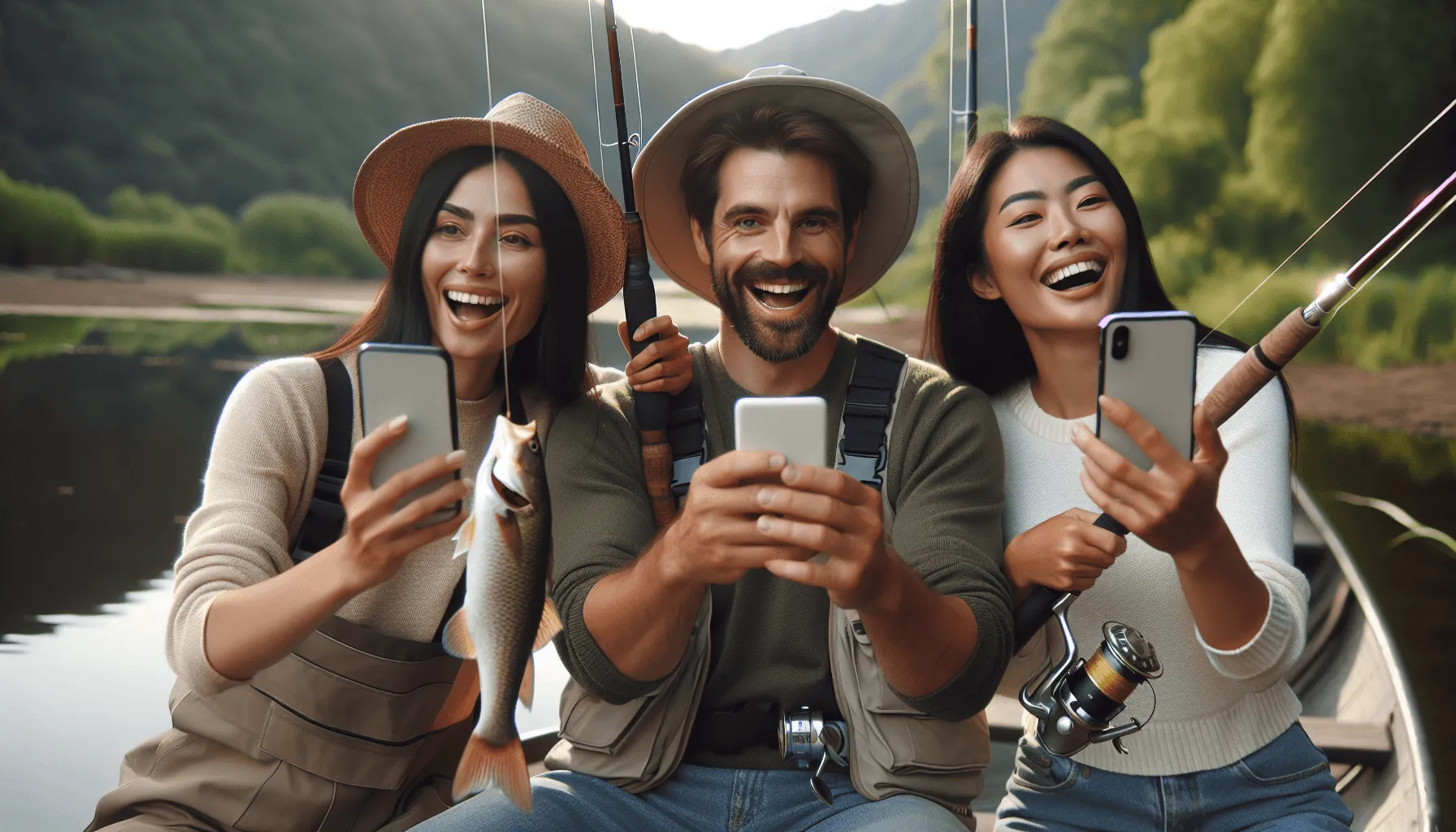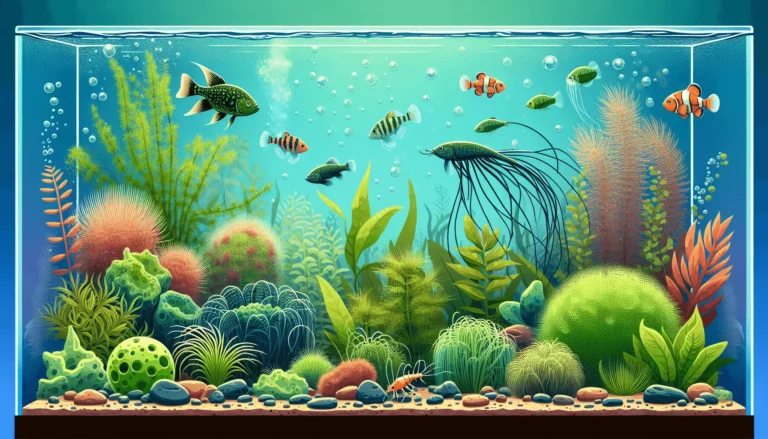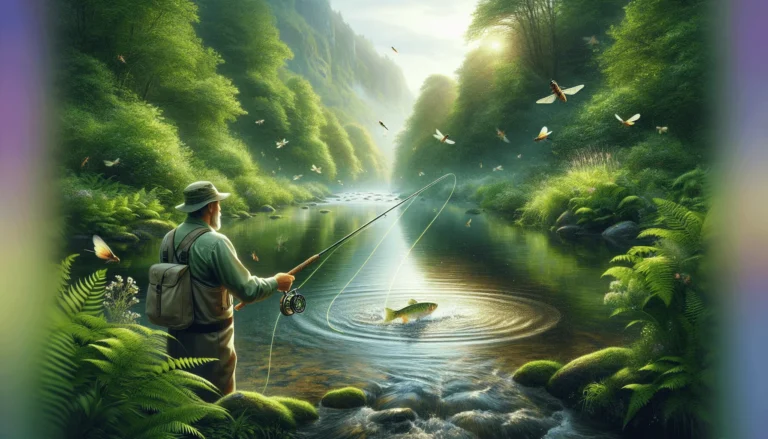Getting sponsorships in the world of fishing can be challenging. It’s not just about winning tournaments anymore; you also need a strong presence on social media and the ability to connect with your audience.
Sponsorships are essential for anglers who want to take their careers to the next level. Sponsored anglers often receive financial support, gear, and other resources that allow them to focus on their craft. These partnerships can boost your reputation in the fishing community and open doors for growth and exposure.
In this article, we’ll share practical tips for aspiring sponsored anglers on how to get sponsored for fishing. You’ll learn how to use social media effectively and create persuasive proposals that make you an appealing choice for sponsorships.
Understanding the Sponsorship Landscape
Sponsorships have changed over time. Here’s how:
Evolution of Sponsorship Criteria
In the past, sponsorships were primarily awarded based on tournament successes and professional accolades. Today, companies are looking for more than just a winning track record. They seek anglers who can bring visibility and engagement to their brand.
The Shift Towards Social Media Presence and Engagement
Social media platforms have transformed the sponsorship landscape. Brands now prioritize anglers with a strong online presence on Instagram, YouTube, and TikTok. Engaging content that resonates with audiences is crucial, as it translates to higher brand exposure and potential sales.
Importance of Brand Alignment with Personal Values
Authenticity is key in today’s market. Brands prefer to collaborate with anglers whose personal values align with their own. This alignment ensures a genuine partnership that resonates well with the target audience, leading to increased trust and loyalty towards both the angler and the brand.
1. Leveraging Social Media for Sponsorship Opportunities
Building a strong online presence is crucial when seeking sponsorships. Platforms like Instagram, YouTube, and TikTok are ideal for showcasing your fishing skills and personality.
Building a Strong Online Presence
- Instagram: Share high-quality photos and short videos highlighting your fishing adventures.
- YouTube: Create detailed tutorials and vlogs to engage viewers.
- TikTok: Post quick, engaging clips demonstrating fishing techniques or humorous moments.
Creating Engaging and High-Quality Content
Your content should reflect both your fishing expertise and personal flair. High-quality visuals are essential; invest in a good camera and editing software. Showcasing different aspects of your fishing trips can make your content more relatable and enjoyable.
Strategies for Increasing Audience Engagement
Engagement is key to building a loyal following:
- Consistent Posting: Regular updates keep your audience engaged.
- Interactive Content: Host Q&A sessions, polls, or live streams.
- Collaborations: Partner with other anglers or influencers to reach new audiences.
Best Practices for Fishing Content on Social Media
To stand out, focus on these best practices:
- Tutorials and Demonstrations: Share step-by-step guides on various fishing techniques.
- Personal Stories: Narrate experiences from your fishing trips to create an emotional connection with your audience.
- Diverse Content: Mix educational, entertaining, and inspirational content to cater to different interests.
Leveraging social media effectively can significantly enhance your visibility and attractiveness to potential sponsors.
2. Developing Sales Skills to Attract Sponsors
A sales-oriented approach is crucial when seeking sponsorships. It’s not just about your fishing skills but also how well you can sell products and promote a brand. When asking, “how do I get sponsored for fishing,” consider what you bring to the table.
Presenting Value to Potential Sponsors
Highlight what you can offer in terms of exposure:
- Audience Reach: Showcase your social media metrics, such as follower count, engagement rate, and demographics.
- Brand Alignment: Explain how your personal values and audience align with the sponsor’s brand.
- Content Creation: Offer examples of past content that effectively promoted other brands or products.
Crafting a Compelling Pitch
Your pitch should emphasize mutual benefits:
- Clarity and Precision: Clearly outline what you expect from the sponsor and what they can expect from you.
- Tailored Proposals: Customize each pitch to address the specific needs and goals of the potential sponsor.
- Proof of Success: Provide testimonials or case studies from previous partnerships to build credibility.
Developing these sales skills will help you stand out in the competitive fishing sponsorship landscape.
3. Networking and Building Relationships in the Fishing Community

Attending industry events like tournaments and fishing shows is essential for building connections with sponsors and influential figures. These events offer a platform to showcase your skills, making it easier to engage with potential sponsors.
Volunteering at these events or for local fishing organizations, such as through a service partnership with Trout Unlimited, can significantly enhance your visibility and credibility. By contributing your time, you demonstrate commitment to the community, which can be appealing to potential sponsors looking for dedicated partners.
Establishing relationships with local fishing retailers opens up additional sponsorship opportunities. Local businesses might be more inclined to support local anglers who can drive business their way. Collaborating on promotional initiatives with these retailers can benefit both parties, creating a win-win situation.
4. Creating a Professional Sponsorship Proposal
A well-crafted sponsorship proposal is essential for attracting potential sponsors. It should be detailed and tailored to each brand’s unique needs.
Key Components of an Effective Sponsorship Proposal
- Overview of Your Target Audience
- Provide demographics that detail your audience’s age, gender, interests, and geographical location.
- Explain how your audience aligns with the brand’s target market.
- Promotion Plans
- Outline how you intend to promote the brand’s products or services.
- Include specific strategies such as:
- Social media posts
- Videos
- Blog articles
- Live streams
- Examples of Past Promotions
- Showcase any successful campaigns or promotions you’ve done in the past.
- Provide metrics such as engagement rates, reach, and audience growth.
- Content Calendar
- Suggest a tentative schedule for promotional activities.
- Highlight key dates like product launches or special events.
Tailoring Promotional Strategies to Each Brand
To stand out, customize your promotional strategies to align with each brand’s objectives. Here are some pointers:
- Research the Brand: Understand their mission, values, and current marketing efforts.
- Highlight Mutual Benefits: Emphasize how the partnership will benefit both parties.
- Specific Campaign Ideas: Propose unique ideas tailored to the brand’s needs. For example, if the brand focuses on sustainability, pitch eco-friendly fishing tutorials or conservation projects.
Using a sponsorship proposal template can ensure you include all necessary components but personalize each proposal to reflect genuine interest and understanding of the potential sponsor’s goals.
5. Starting Small with Sponsorships
When you’re figuring out how to get sponsored for fishing, consider starting with pro staff deals or lower-tier sponsorships. These initial partnerships often involve product discounts or free gear instead of monetary compensation.
Benefits of Starting Small
- Experience: Working with smaller brands provides valuable experience in fulfilling sponsorship obligations.
- Credibility: Successfully managing these relationships builds your reputation within the industry.
- Networking: It opens doors to future opportunities by establishing connections with brand representatives.
Embrace these smaller opportunities to refine your skills and prove your worth, setting the foundation for larger deals down the line.
6. Maintaining Communication with Sponsors
Consistent communication is key to sustaining and enhancing your relationship with sponsors post-sponsorship acquisition. Regular updates on your activities, achievements, and how their products are performing in the field can significantly boost trust and rapport.
- Regular Updates: Share content showcasing their products regularly to keep them engaged.
- Performance Reports: Provide detailed insights on how their sponsorship is benefiting both parties.
- Feedback Loop: Encourage an open line of communication for feedback and suggestions, showing your commitment to the partnership.
Maintaining an active dialogue ensures that sponsors feel valued and included in your journey.
7. Engaging in Community Activities Related To Fishing

Showing your dedication to the fishing community and promoting sustainability can greatly increase your attractiveness to potential sponsors. Being actively involved in local conservation efforts demonstrates that you care about the long-term well-being of the sport and its environment. This can include:
- Participating in Clean-Up Events: Join or organize local river, lake, or beach clean-up activities. Sharing these efforts on social media can highlight your dedication to conserving fishing habitats.
- Supporting Local Conservation Projects: Get involved in initiatives like fish stocking programs, habitat restoration, and water quality monitoring. Partnering with environmental organizations can broaden your network and visibility.
- Engaging in Educational Outreach: Conduct workshops or seminars for young anglers, teaching them about sustainable fishing practices. This not only promotes the sport but also positions you as a responsible and knowledgeable angler.
- Promoting Sustainability Through Content: Use your platforms to advocate for catch-and-release practices, proper equipment disposal, and other environmentally-friendly behaviors. This aligns you with ethical brands looking for ambassadors who reflect their values.
Engagement in these activities not only builds your reputation but also demonstrates to sponsors that you are committed to the future of fishing.
8. Using Affiliate Marketing As An Income Source Alongside Sponsorships
Affiliate marketing can be a great way to earn money in addition to traditional sponsorships. Here’s how it works:
- Earning Commissions: When you promote fishing gear brands’ products or services online, you can earn a commission for every sale made through your unique referral link.
- Creating Content: Write product reviews, make tutorial videos, or share your personal experiences with the gear to generate interest and drive traffic to the brand’s website.
- Engaging Your Audience: Use social media platforms and your blog to share these affiliate marketing links. Ensure the content is engaging and provides value to your audience by including tips, tricks, and honest evaluations of the products.
By integrating affiliate marketing with your other promotional activities, you not only diversify your income but also enhance your attractiveness to potential sponsors. They see an angler who is proactive in promoting products effectively.
Conclusion
Implementing these strategies can significantly enhance your chances of securing fishing sponsorships like a pro. Stay true to yourself throughout your journey towards becoming a sponsored professional. Building lasting partnerships within the industry requires authenticity and dedication. Engage actively with your audience, maintain strong relationships with sponsors, and always look for new opportunities to grow.
Remember: The key to success lies in:
- Consistent effort
- Authentic engagement
- Continuous learning
By following these tips, you’ll be well on your way to answering the question, “How do I get sponsored for fishing?”
FAQs (Frequently Asked Questions)
How do I get sponsored for fishing?
To secure fishing sponsorships, it’s essential to build a strong online presence across social media platforms like Instagram, YouTube, and TikTok. Create engaging content that showcases your fishing skills and personality, and develop relationships within the fishing community through networking and attending events.
What are the key criteria for securing a sponsorship in fishing?
Sponsorship criteria have evolved to include a strong social media presence and engagement. Brands look for alignment with personal values, audience demographics, and the ability to promote their products effectively. Demonstrating a sales-oriented approach can also enhance your appeal to potential sponsors.
What should be included in a professional sponsorship proposal?
An effective sponsorship proposal should include an overview of your target audience demographics, promotional strategies tailored to the brand’s needs, and how you plan to promote their products or services. This can involve outlining specific tactics like social media posts, videos, or other marketing initiatives.
Is it beneficial to start with smaller sponsorships?
Yes, starting small with lower-tier sponsorships or pro staff deals can provide valuable experience in working with brands while building credibility in the industry. This approach allows you to learn the ins and outs of sponsorships before aiming for larger deals.
How important is communication after securing a sponsorship?
Maintaining regular communication post-sponsorship acquisition is crucial. It helps foster a strong relationship between you and your sponsor, ensuring that both parties remain engaged and informed about ongoing promotional activities and updates.
Can I utilize affiliate marketing alongside sponsorships?
Absolutely! Affiliate marketing can serve as an additional income source while promoting fishing gear brands. By using unique referral links to drive sales, you can earn commissions on each sale made through your promotions, complementing your sponsorship efforts effectively.




